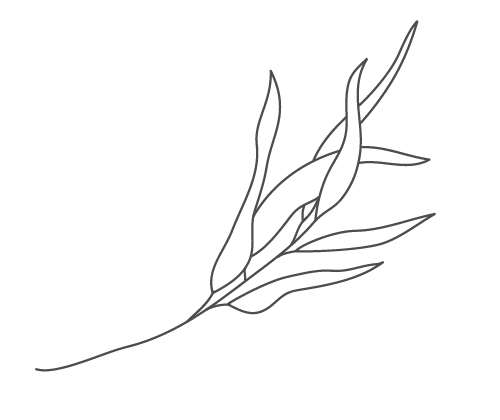We all know vegetables are essential for good health… but have you considered making sea vegetables a part of your diet?
Over the past few decades, medical research has begun to uncover what Asian cultures have known for over 10,000 years: that sea vegetables (i.e. seaweeds) are one of the most nutrient-packed foods on earth. We tend to think of seaweed as the chewy green thing that holds our sushi together, but these magical greens happen to be one of the world’s great superfoods.
Seaweed is rich in essential vitamins, minerals, protein and trace elements that are often lacking in land veggies. In fact, sea vegetables have 10 to 20 times the minerals of those found in land plants. They gain their nutritional value from the nutrient-rich ocean in which they grow and provide an excellent source of iodine, calcium and iron. They can reduce blood cholesterol, improve digestion, counteract obesity and strengthen bones and teeth. They even contain antibiotic properties.
Did you know that seaweeds were actually harvested for human consumption before the development of agriculture? Historically, they were reserved for royalty, but these days you don’t have to be the Duchess of Cambridge to get your mitts on them – just nip down your local health food shop.
Try making sea vegetables a regular part of your diet so you can take full advantage of their incredible nutrient density and detoxification properties. There’s a wide variety available but the one I use most regularly is kombu. I’ll often chuck a strip of kombu in a soup or stew. You don’t actually have to eat it – all of the nutrients leach out into the dish. And here’s a great tip: if you’re cooking anything with beans, sticking some kombu in the pot will help soften them during cooking and make them easier to digest.
Wakame is the seaweed most commonly found in miso soup and has delicate, long green strips. I sometimes chop it in small pieces over a potato salad or mix it with toasted sesame oil and sesame seeds for a nice side salad.
To rehydrate sea vegetables, put them in a bowl filled with cold water and swish them about, then discard this water and rinse again. Refill the bowl with cold water and let the sea vegetables stand for 15 minutes. (The leftover water is reputedly great to add to your houseplants or rinse your hair with.)
Give sea veggies a go – and don’t forget to share how you get on!



0 Comments